Memory Lane in Tokyo, or as the locals call it, Omoide Yokocho (思い出横丁), is a famous alley located near the west exit of Shinjuku Station. Omoide Yokocho dates back to the late 1940s and has a post-war black market history, with tiny shops originally selling goods and food to a recovering population.
Today, Omoide Yokocho is home to about 80 premises, including ticket shops and 60 bars and restaurants.
You will find mostly motsuyakiya (offal restaurants) and yakitoriya (chicken skewer restaurants) crowded together in about 2,000 m2 of land.

Brief History of Omoide Yokocho
Omoide Yokocho has a long history that dates back to the 1940s, when Tokyo was still recovering from war. These narrow alleys were a heaven for black market traders, who supplied scarce goods and resources that were otherwise difficult to come by during those challenging times.
Over the years, Omoide Yokocho underwent a metamorphosis, evolving into a network of permanent structures. In 1999, a terrible fire destroyed the area, and the whole place had to be rebuilt. After this, the old name Piss Alley was changed to Omoide Yokocho, which means Memory Lane.
Today, Omoide Yokocho, is a busy spot where many people, including office workers, come to enjoy tasty and inexpensive Tokyo street food.
It has also become a favorite tourist destination, where visitors can experience local culture and try authentic Tokyo flavors.
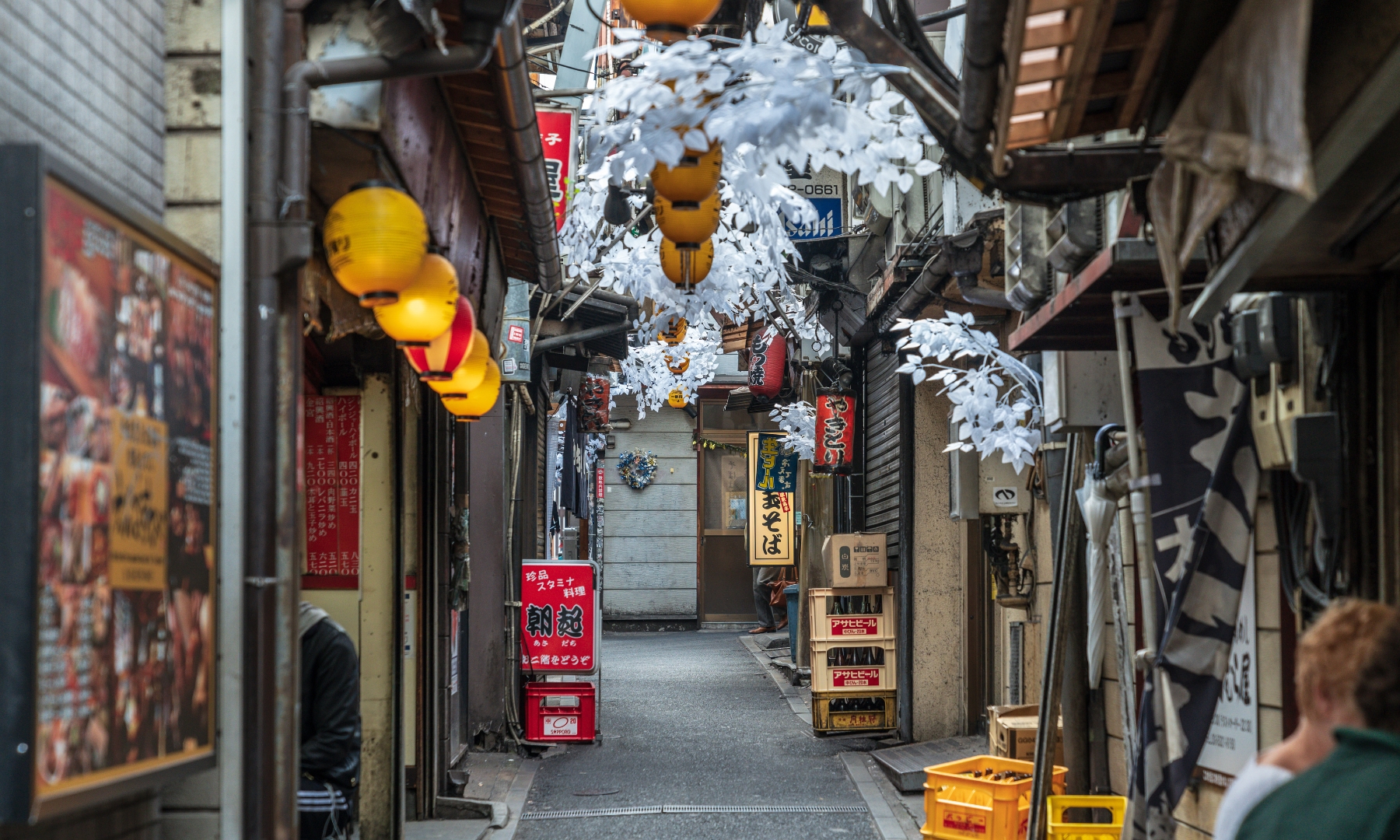
What to do in Omoide Yokocho
In Omoide Yokocho, you can take great photos, taste Japanese food and drinks, and maybe chat with other visitors, including office workers unwinding after work.
With about 60 food stalls, Memory Lane is a prime spot to try street food like skewered meats.
The alley is renowned for its tiny food stalls serving yakitori (grilled chicken skewers), grilled seafood, and offal. Even if some menus are in English, trying unfamiliar dishes can be fun. Try to practice a little Japanese before heading here, though, as it will enhance your experience.
The narrow alley, with its traditional lanterns and bustling atmosphere, makes for a great photography spot, especially in the evening.
With its cozy and informal setting, it’s a great place to strike up conversations with Tokyoites, but don’t be offended if people don’t feel comfortable speaking English. However, some curious locals will ask you a few questions.
Once you’ve had plenty of food and drinks, go and explore the nearby Golden Gai and Kabukicho, which are some top things to do in Shinjuku.
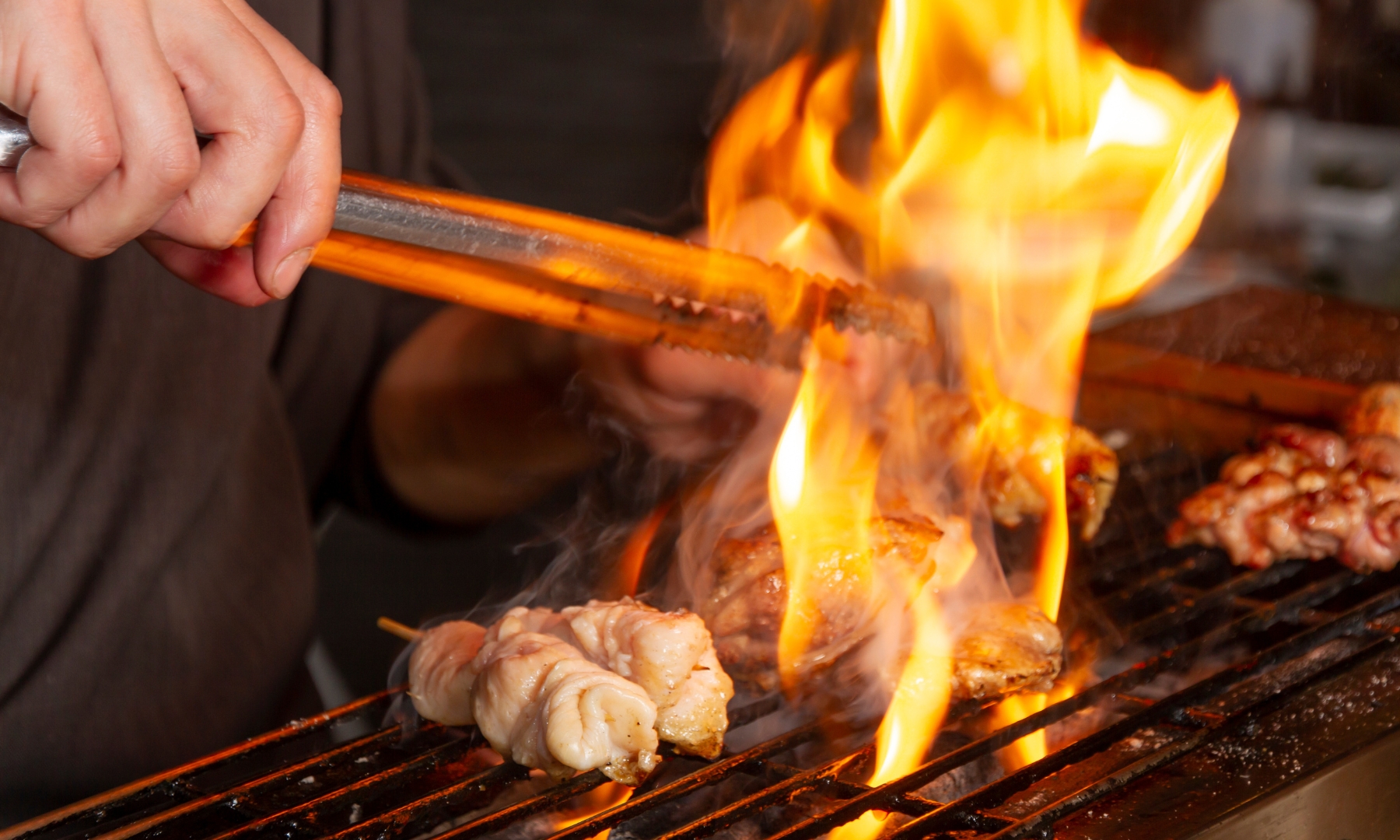
What and where to eat in Omoide Yokocho
Omoide Yokocho has a diverse selection of dishes, so to make it easier, I put together a few things I recommend you try and the restaurants you should add to your itinerary.
The main draw to Omoide Yokocho is the yakitori, which means grilled chicken. However, I suggest trying something different like motsuyaki, which is grilled offal, or motsunikomi, a stew made with offal.
Horaiya, which opened in 1947, is a key spot in Omoide Yokocho. It was the first to specialize in motsuyaki, which is grilled offal. You can try their expertly cooked offal with special sauce or even as raw sashimi if you’re adventurous.
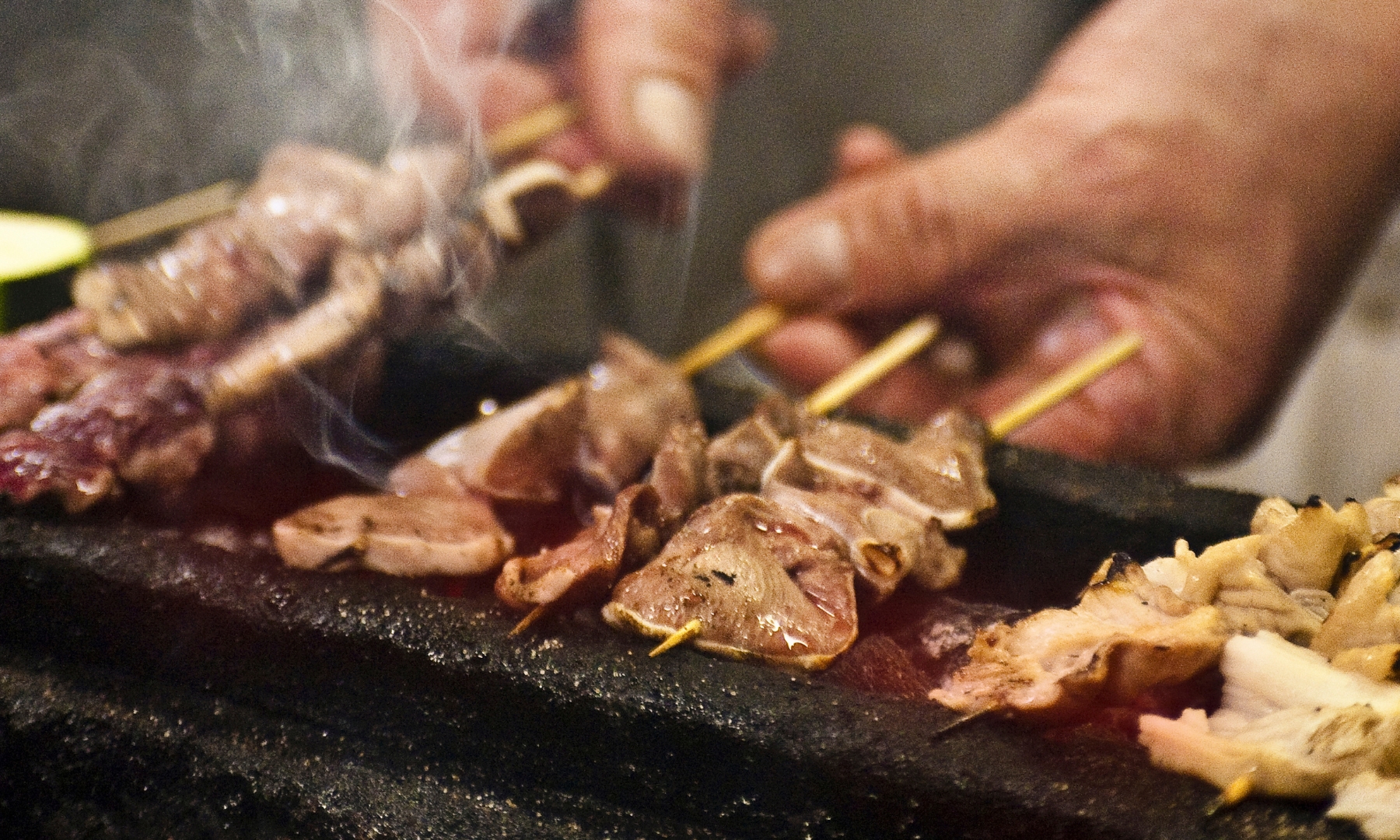
If you like seafood, you can order oysters, eel skewers, and sushi. There are also places that serve ramen, oden, and hot pot for hearty, comforting meals.
A must-visit is Sushi Tatsu, the only sushi spot in Memory Lane. It’s run by Murakami, who heads the Omoide Yokocho Association. They are known for their carefully prepared sushi and homemade thick-grilled eggs made the traditional way.
For more unusual choices, visit Asadachi to try frog, loach, and snapping turtle, or check out other places for pork tongue and chicken liver.
If you’re unsure what to order, you can ask for omakase, which means I leave it up to you. Keep in mind that omakase often involves multiple courses and can be more expensive. Remember, by choosing omakase, you’re showing trust in the chef’s choices and should be prepared to try everything served to you.
Make sure to check the official website for all the restaurant information with precise location.
For a more authentic experience join a food tour around Memory Lane.
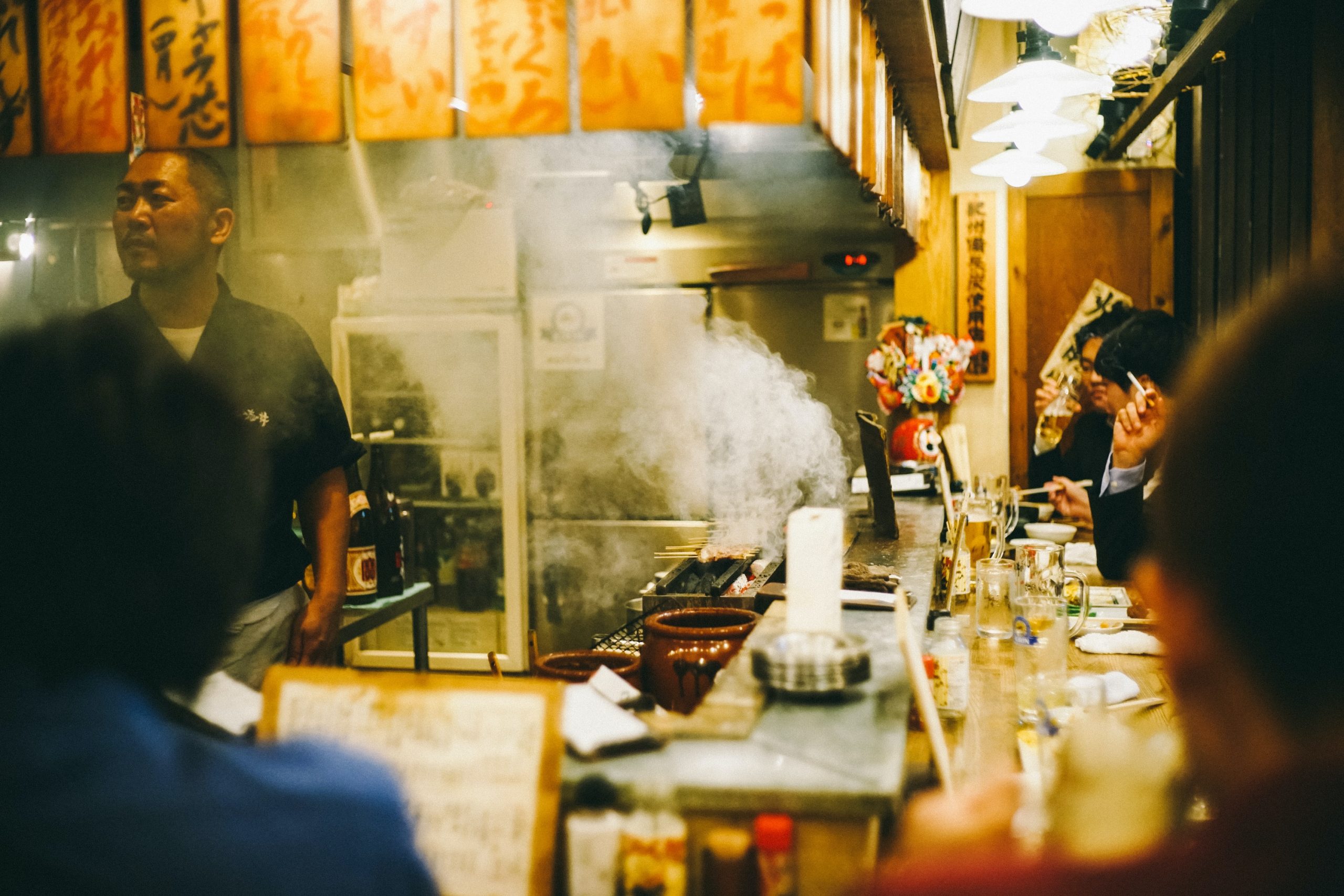
Things to know about Omoide Yokocho
There are a few things to know about Memory Lane in Tokyo.
There are very few public toilets here and the line is usually long. Don’t wait until the last second to go because you might wait in a long queue.
There are still many stores that accept cash only. Take some Japanese yen with you. There are some banks with foreign cash machines around Shinjuku Station.
Each restaurant has its own rules. Here is an example: at Kabuto, a popular restaurant in Omoide Yokocho, there is a limit of three drinks per person. This rule helps ensure that everyone waiting gets a chance to enjoy the delicious food as well.
Some restaurants have an appetizer fee (seating fee). This means that you normally need to order one drink and one dish per person.
Some restaurants only allow 90 minutes seating time, again, to encourage other people to try the food as well. But with so many eateries around, you can find plenty of places to try new dishes.
There is a strictly no smoking rule on Memory Lane. There are designated areas so please make sure to respect them.
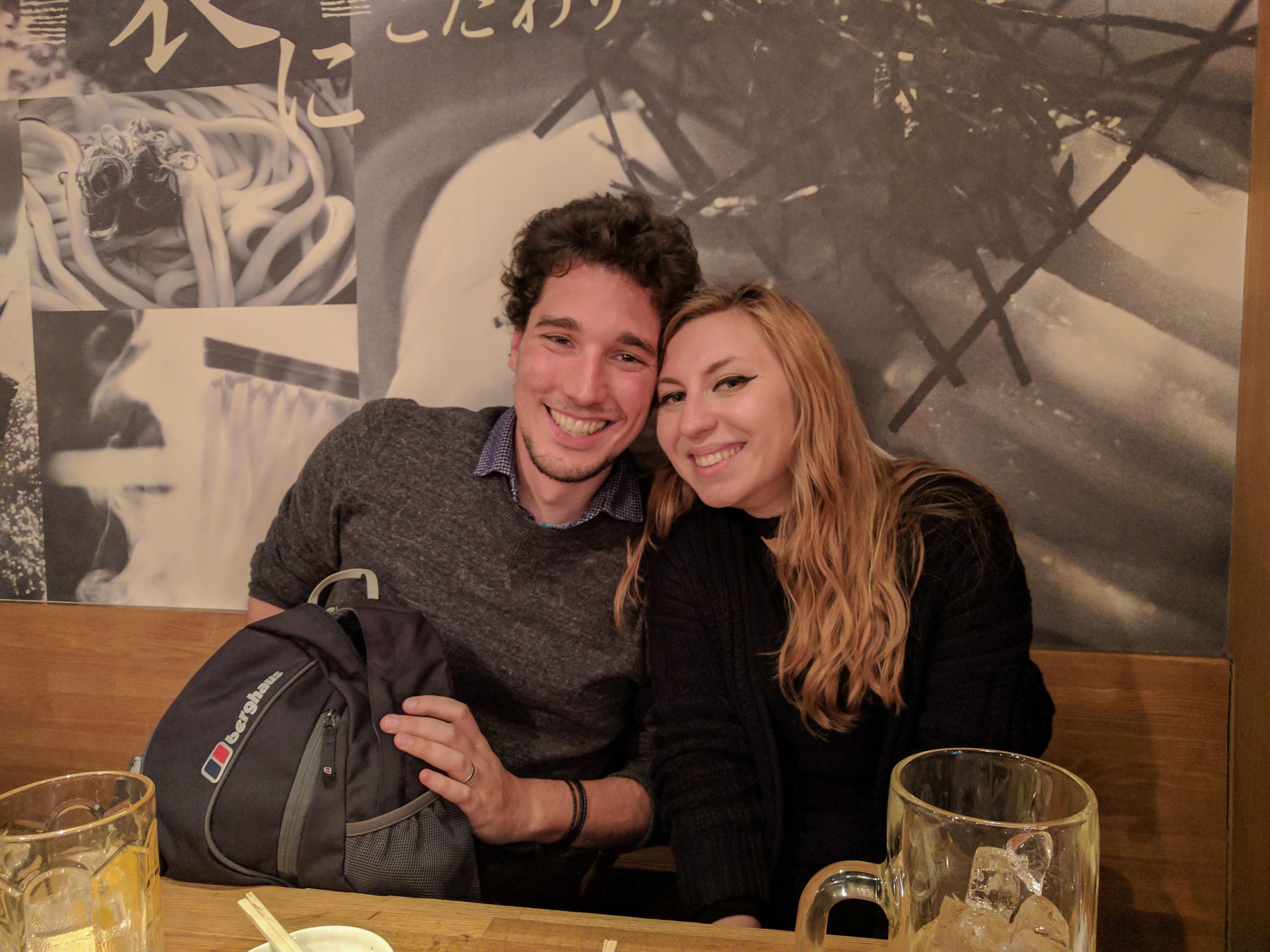
How to get to Memory Lane Tokyo
Access: 5 minute walk from JR Shinjuku Station West Entrance
Address: Google Maps
Hours: Open 24 hours
Omoide Yokochō
1 Chome-2 Nishishinjuku, Shinjuku City, Tokyo 160-0023, Japan
📞 Contact
🚉 Closest Station (Directions)
Shinjuku-nishiguchi Sta.
🕥 Opening Hours
Monday: Open 24 hours
Tuesday: Open 24 hours
Wednesday: Open 24 hours
Thursday: Open 24 hours
Friday: Open 24 hours
Saturday: Open 24 hours
Sunday: Open 24 hours
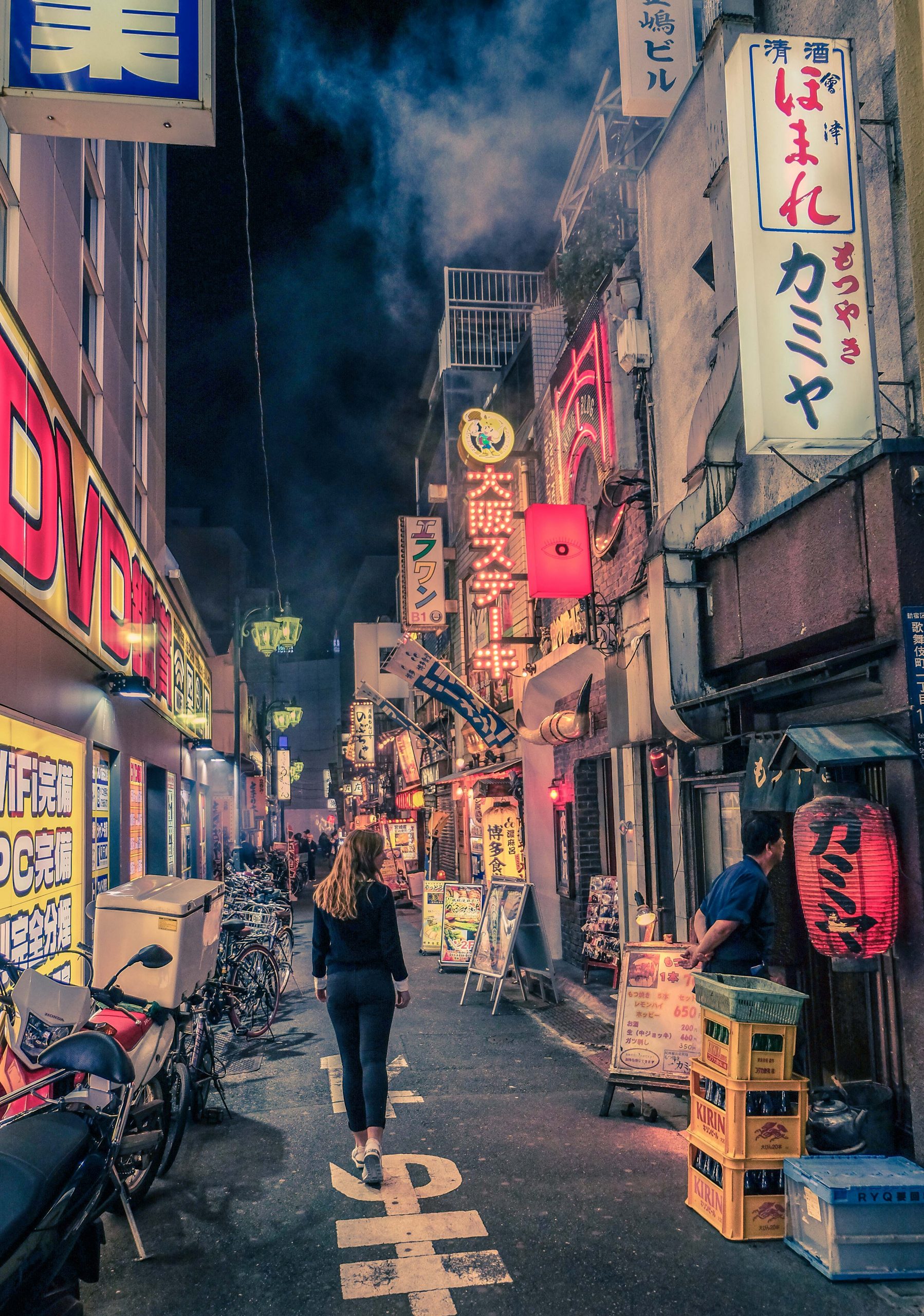
Where to stay near Omoide Yokocho
You will want to stay as close to Shinjuku station as possible. Shinjuku is a large ward in Tokyo with so many fantastic hotels and accommodation options. You will find luxury hotels but also affordable and simple budget accommodations.
For a complete breakdown on all important areas in Tokyo and reviews of my favorite hotels, read my where to stay in Tokyo article. I discuss different areas and why they are most suitable for your type of travel style and budget. I also recommend my favorite hotels in Tokyo organized by budget.
- Best luxury hotel: Hotel Chinzanso Tokyo
- Best mid-range hotel: The Blossom Hibiya
- Best budget hotel: Tokyu Stay Shinjuku Eastside
For more hotels and reviews, I recommend using booking for accommodation in Tokyo.
More Tokyo tips
- When planning your first trip to Japan, make sure to check the dos and don’ts.
- Learn what to pack for Japan to ensure you have the perfect wardrobe for every season.
- When planning your first trip to Tokyo, consider the best time to visit Japan. Keep in mind that cherry blossom season is a lot busier and more expensive.
- Booking your activities in advance is highly recommended to avoid queuing and ensure availability, especially for popular attractions.
- While Japanese food is excellent everywhere, a food tour can take you to lesser-known gems and off the beaten path izakayas for a unique culinary experience.
- If you plan to stay longer in Japan, check out our Japan itineraries with details on where to go and how to plan the perfect trip. For this, invest in a JR Pass to save money on JR trains.
- Customs and manners in Japan can be unique, so make sure to familiarize yourself with our Japanese customs and manners book. It contains fun Japanese illustrations and crucial information on how to behave in various scenarios when visiting Tokyo.
- Don’t forget to also check how to behave in a Japanese restaurant.
- Stay connected with a pocket Wi-Fi device or prepaid SIM card. Renting or buying in advance will help you use navigation apps, translators, and do some extra research on the go. You can pick up the device at Narita or Haneda airport, or have it delivered to your hotel reception.
- While Tokyo’s public system can be overwhelming, using Google maps makes it super easy to get around. The metro lines are colour-coded for ease of use and Google Maps even tells you in real-time the next train, the best car for boarding, and where to make connections.
- While cards are widely accepted, many small establishments still prefer cash, particularly in older neighbourhoods. Major banks in Japan now accept international cards for cash withdrawals. Don’t forget to check how expensive is Japan to know what to expect.
- Knowing a few simple Japanese phrases can go a long way. For those serious about learning Japanese, check out Japanese with Aimee and use the code YCTRAVEL to get a 10% discount on the course.

Are you ready to visit Memory Lane in Tokyo? Leave a comment below and let me know what are you going to eat and drink during your first visit!
Frequently Asked Questions
What is Omoide Yokocho known for?
Omoide Yokocho is a narrow Tokyo alley known for its over 60 eateries, mainly motsuyakiya (offal restaurants) and yakitoriya (chicken skewer restaurants) crowded together in about 2,000 m2 of land.
Omoide Yokocho or Memory Lane has a long and rich history dating to post-war Tokyo. Originally a place for black market supplying scarce goods, the lane was destroyed by a fire in 1999, then re-emerged as Memory Lane. Today, it is a lively destination where locals and tourists gather to enjoy affordable street food.
How much does Omoide Yokocho cost?
There is no entry to Memory Lane, however some establishments charge a small seating fee (or appetiser fee)
The cost of eating in Omoide Yokocho can vary depending on what you order and where you dine. Generally speaking, you can expect to pay around ¥250 to ¥1,000 (roughly $2 to $10) per dish. Alcoholic beverages like sake or beer may cost an additional ¥500 to ¥800 ($5 to $8) each.
Some gourmet treats will be more expensive, a bowl of ramen will be a little over ¥1,000 and if you go for Omakase Sushi at Sushi Tatsu, expect to pay around ¥3,800.
Will I find vegetarian food in Omoide Yokocho?
Vegetarian food can be more challenging to find in Omoide Yokocho, but it is not impossible. Many izakayas offer vegetable-based dishes, and you may come across tofu or vegetable skewers at some yakitori stalls. For example, Horaiya has a special which is tomato and cheese skewer. Mayukichi offers kimpira gobo (burdock root cooked in sesame oil and soy sauce) and morokyu (cucumber served with moromi miso). Taro offers vegetable skewers, Komatsu has broiled veggies, Nogataya served potato salad, Fujinoya has grilled eggplant.
If you are a vegetarian, it is a good idea to hop a little to try a bit of everything in different restaurants. If you can’t read or speak Japanese, learn Bejitarian de onegaishimasu and wait for the chef to offer you the veggie options.
Is the food good?
The food is fantastic! Some of the restaurants on Memory Lane have been in existence in the same family and passed down for generations. Food in Omoide Yokocho is high quality, authentic and delicious. Chefs here developed their recipe for sauces and cooking techniques for many years, which is why the dishes are so special and unique.
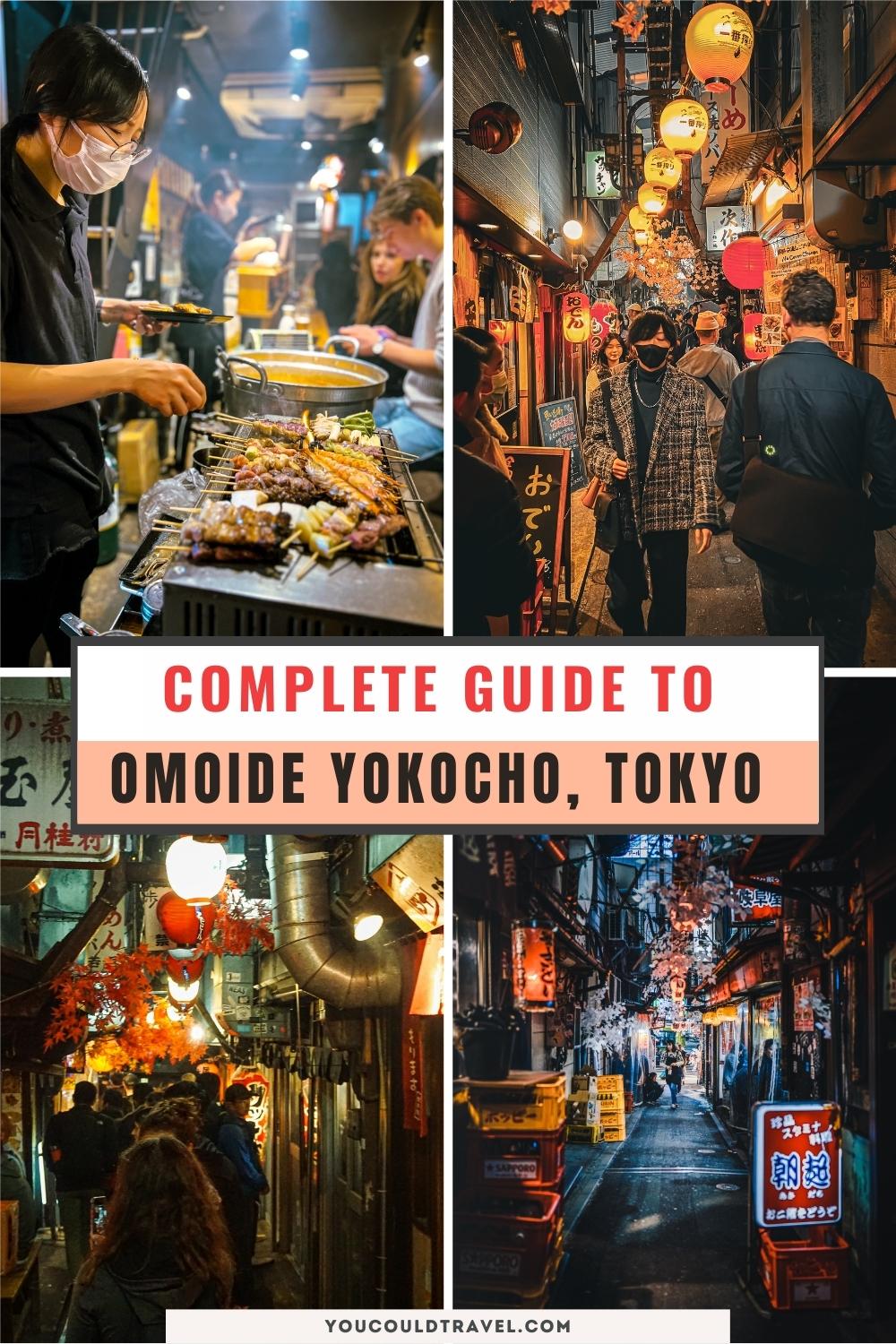
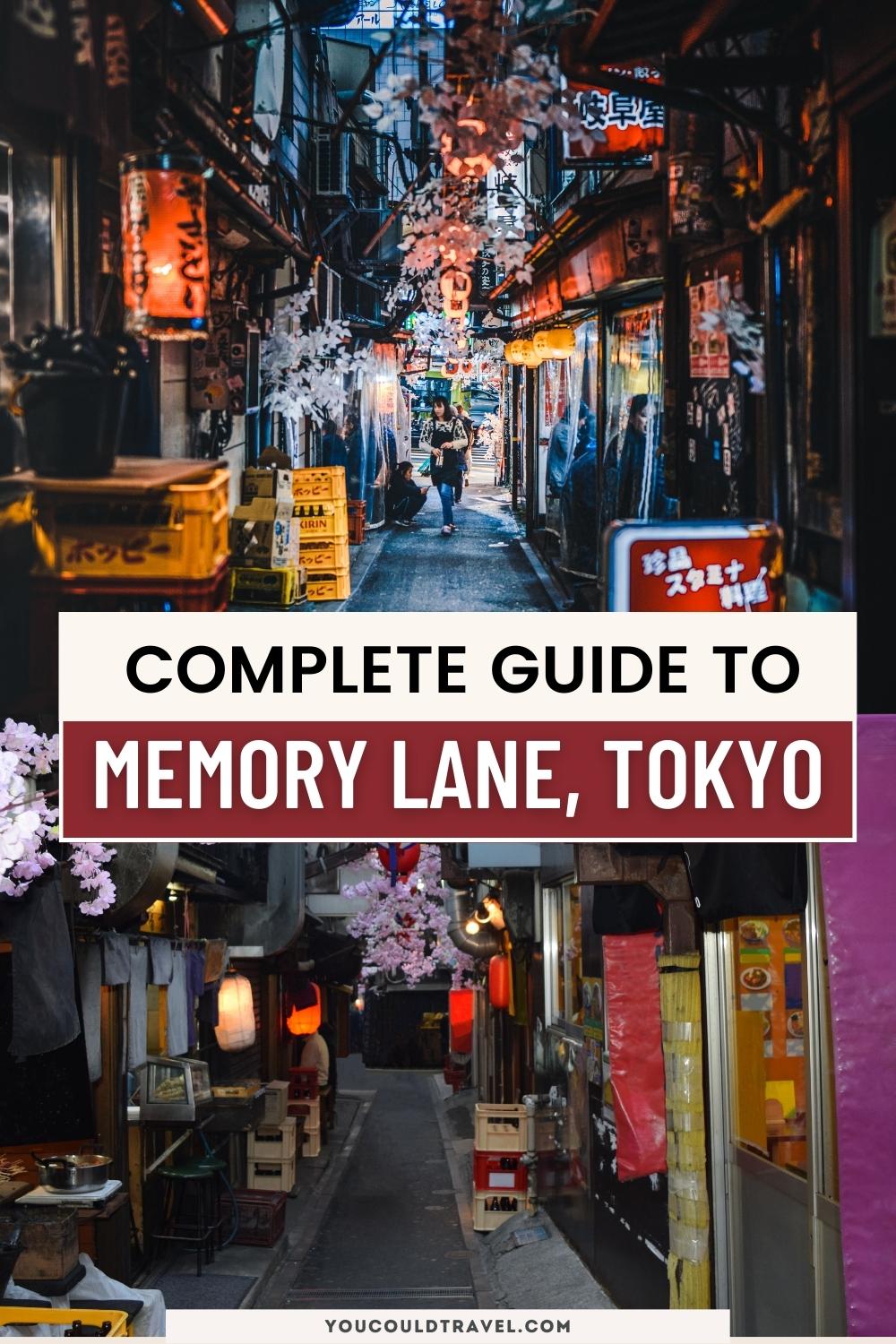

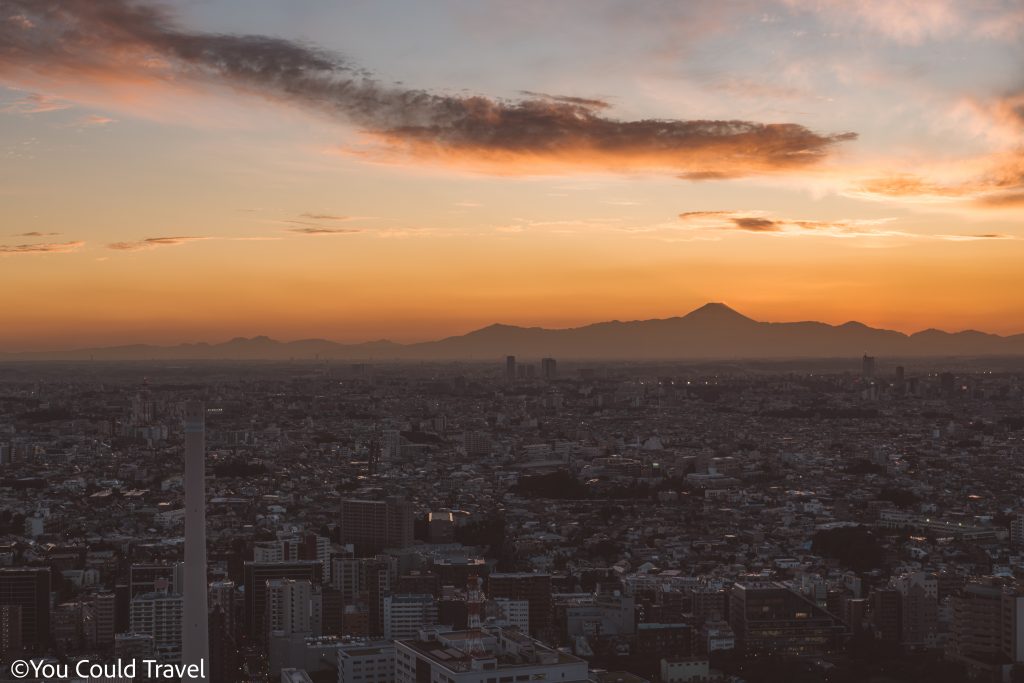
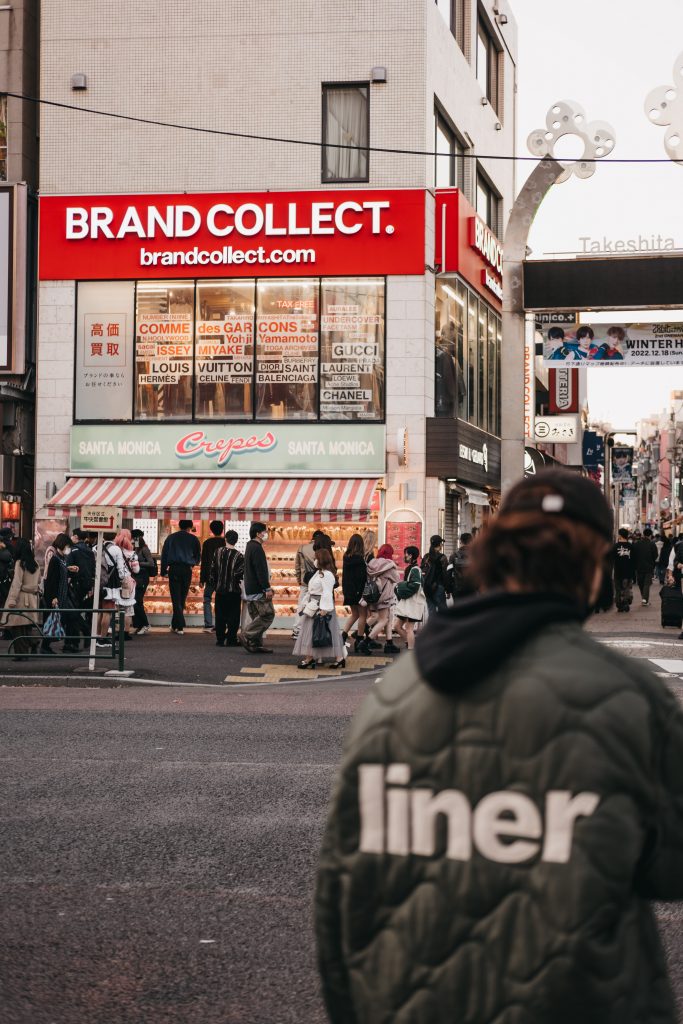

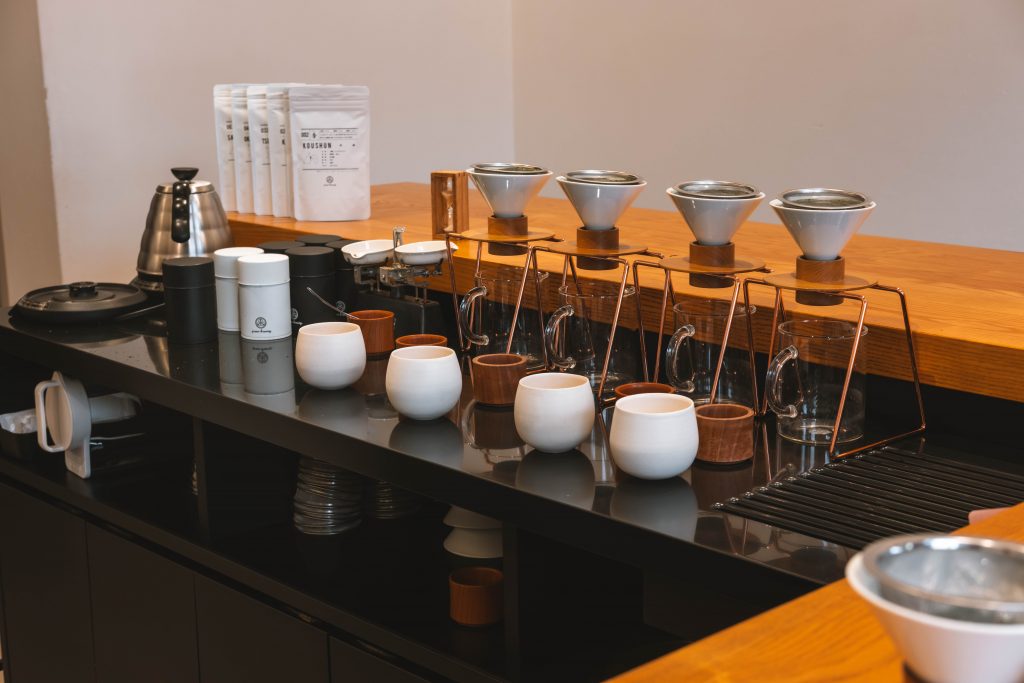

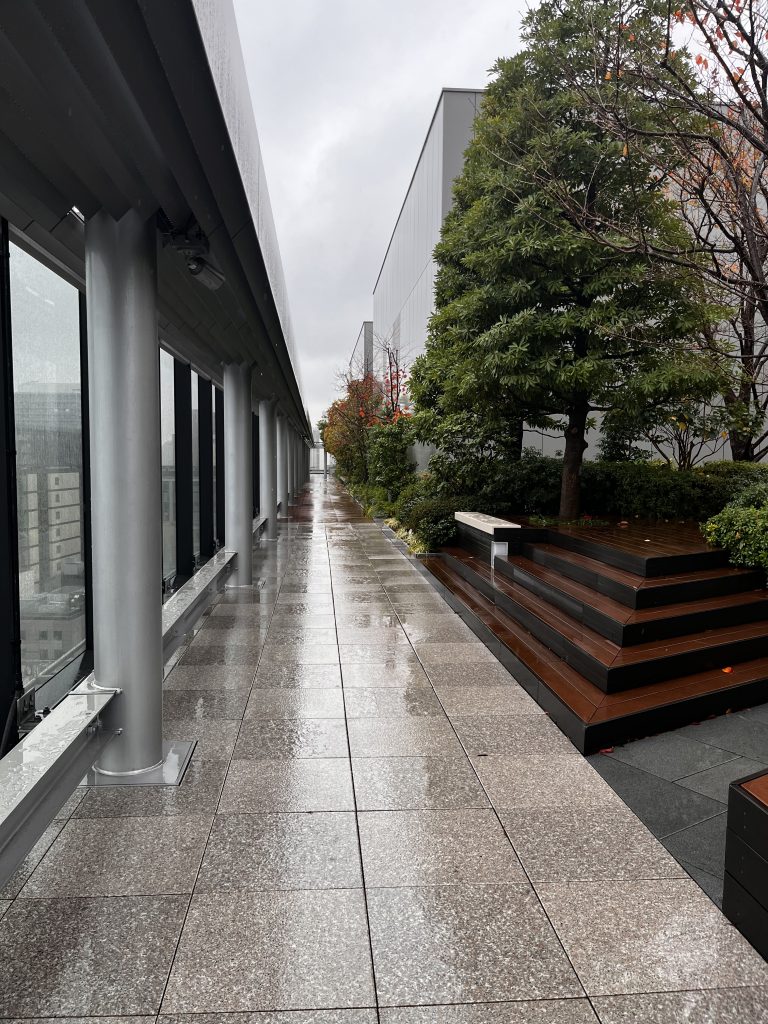


Leave a Reply